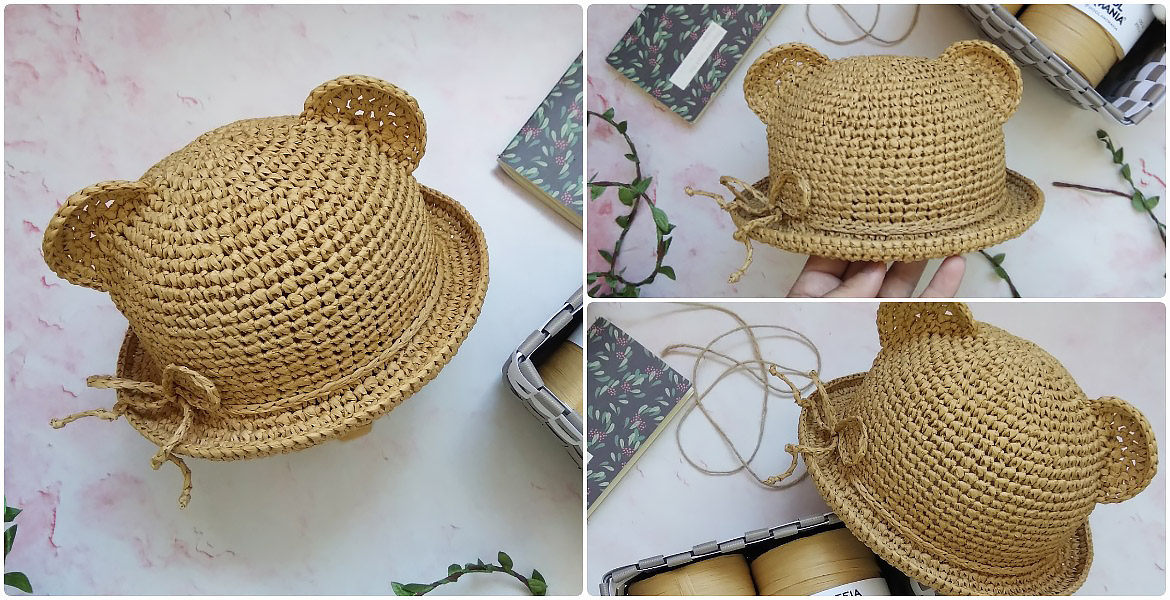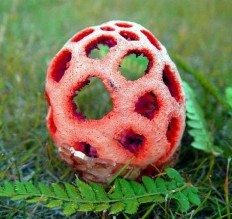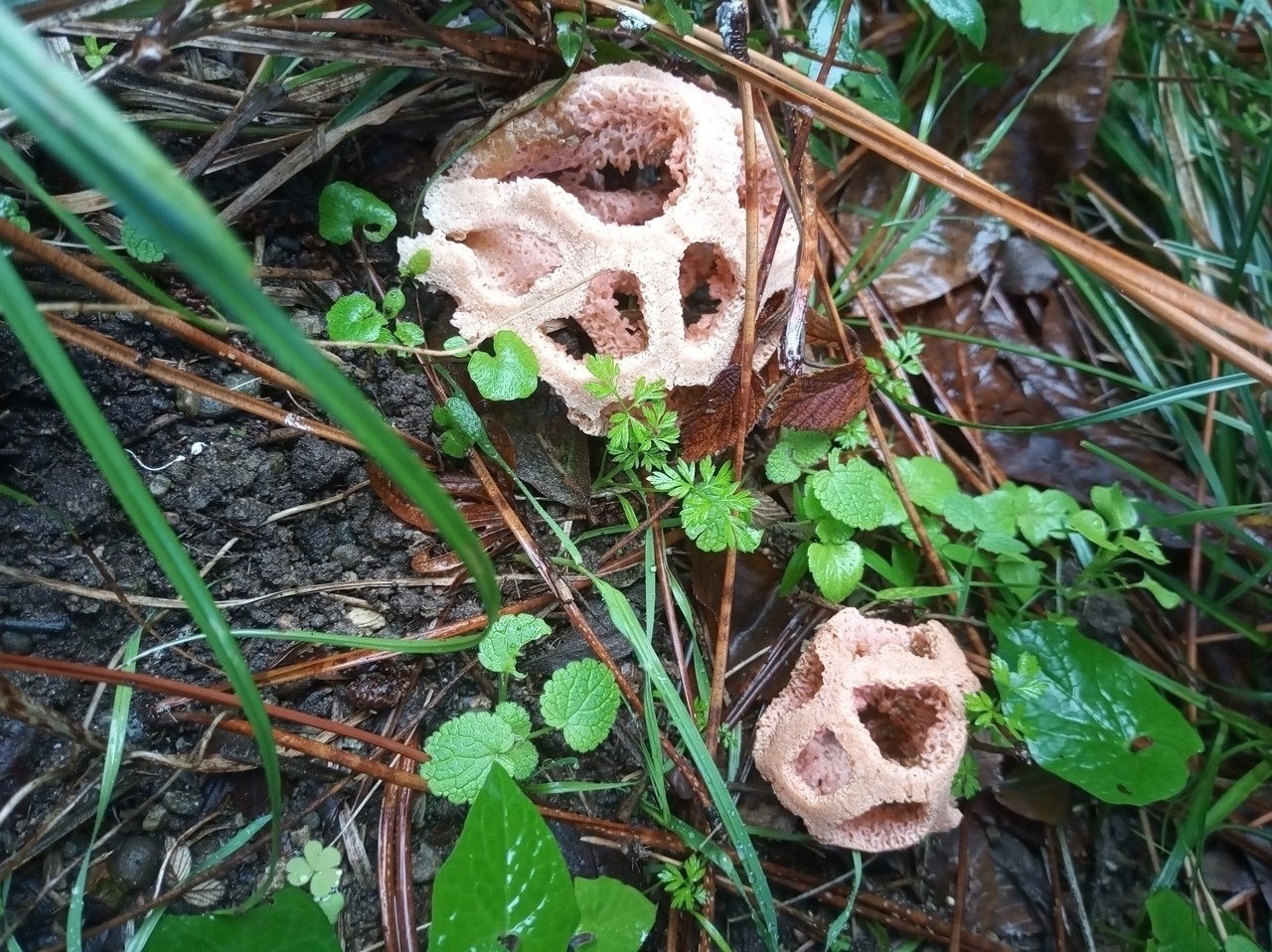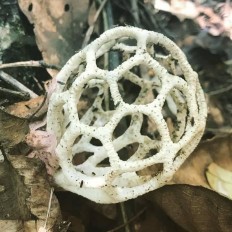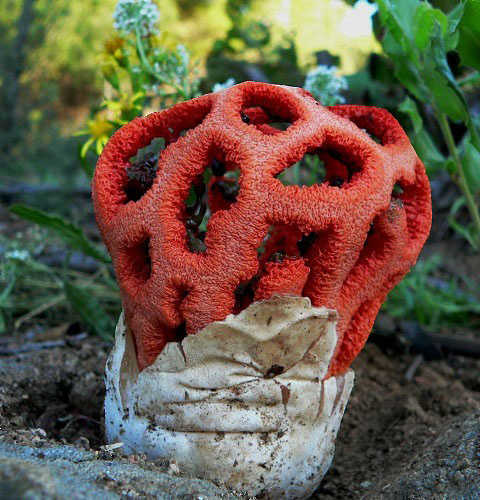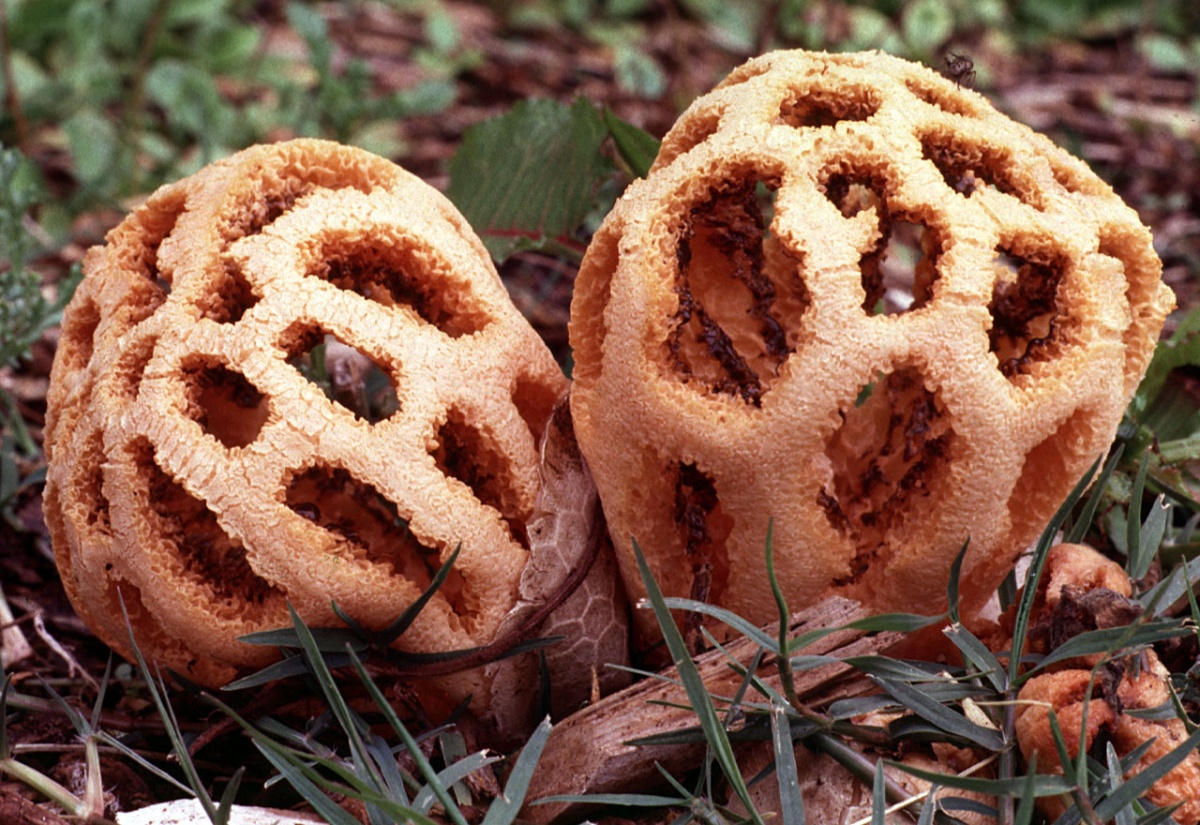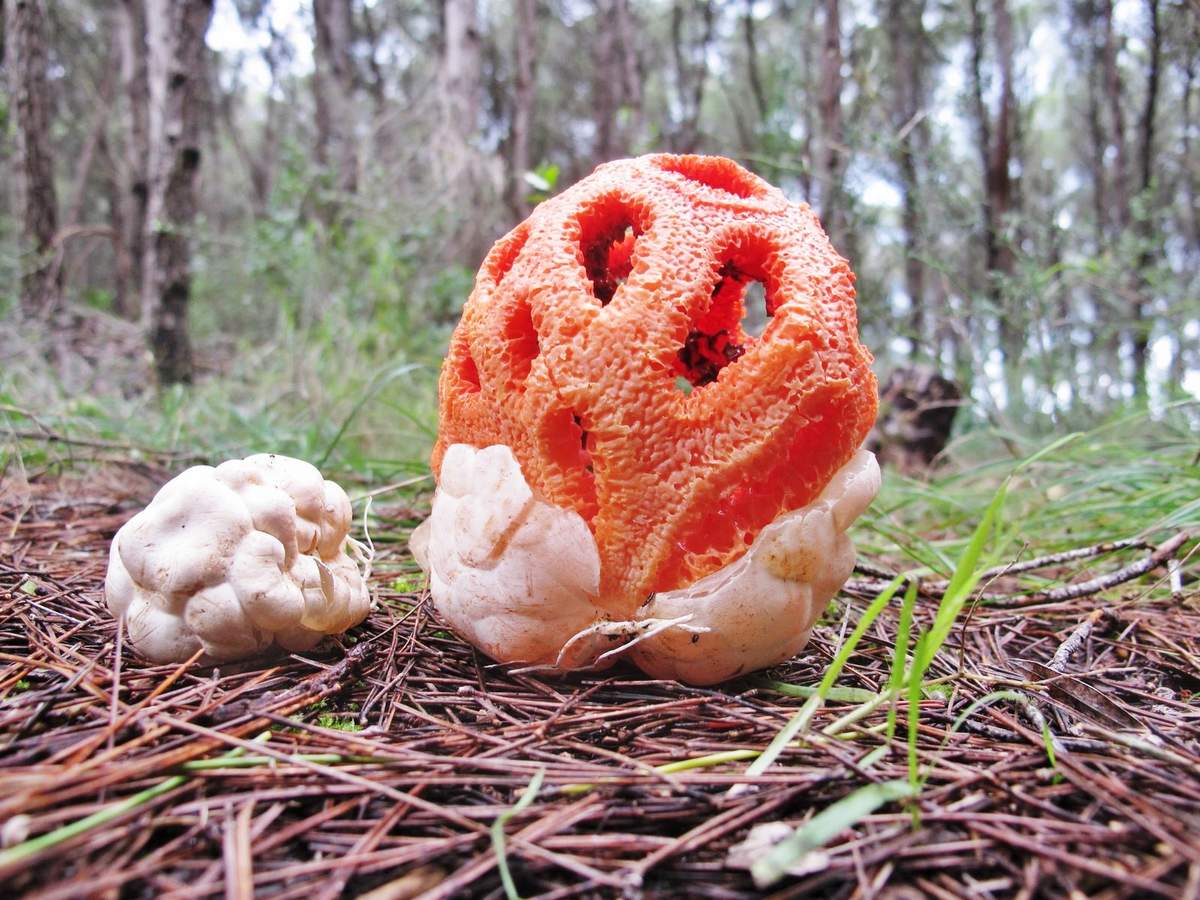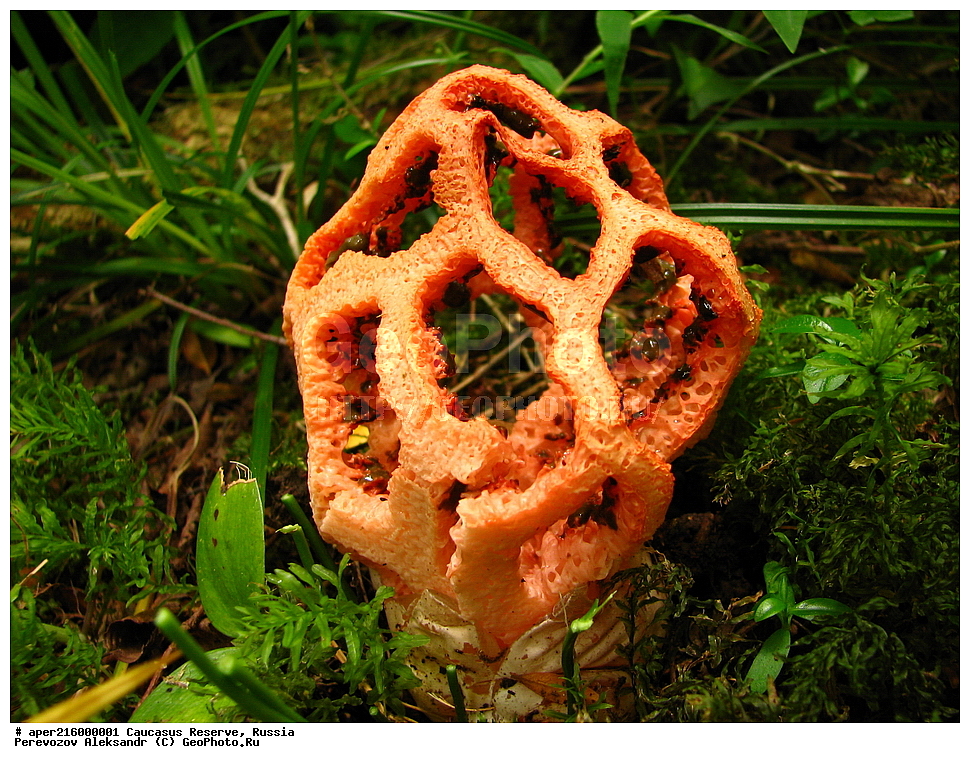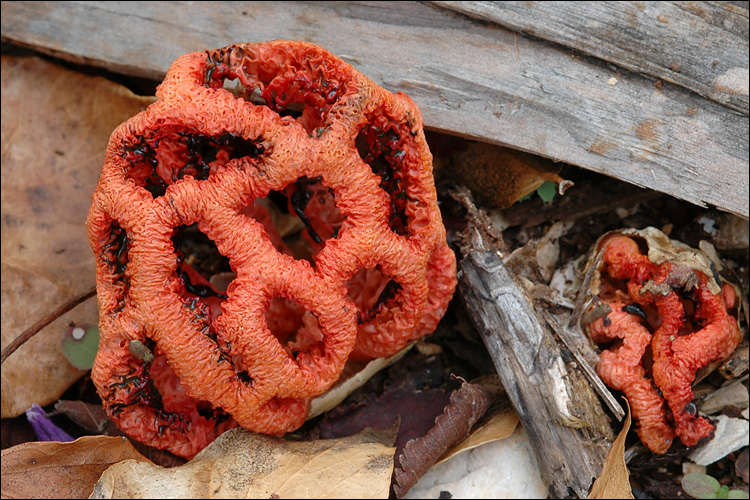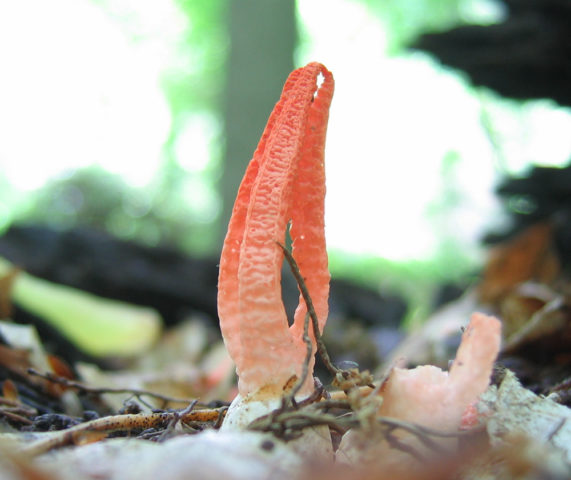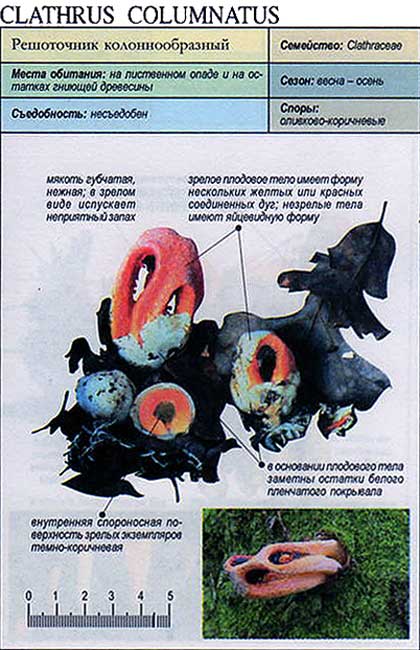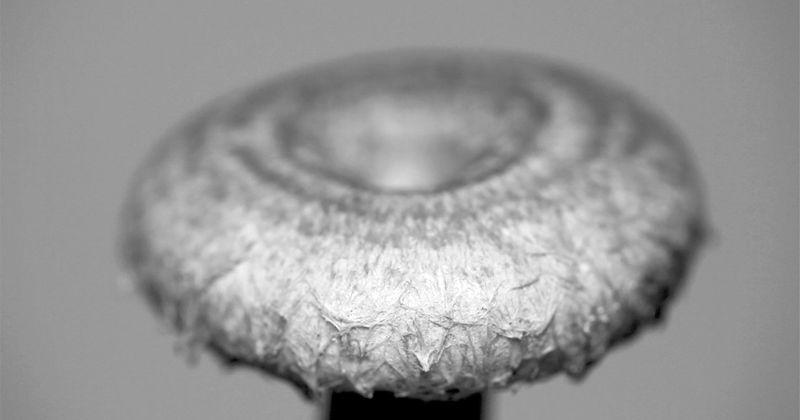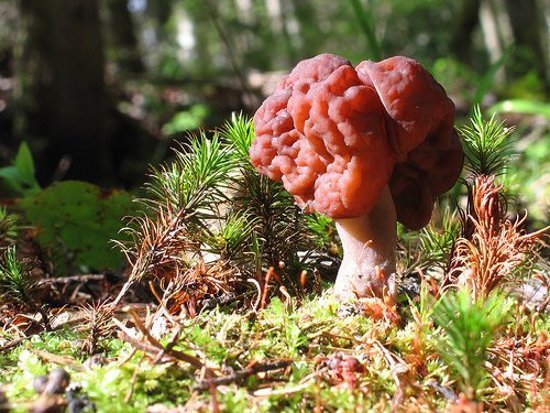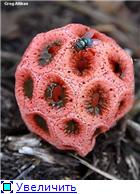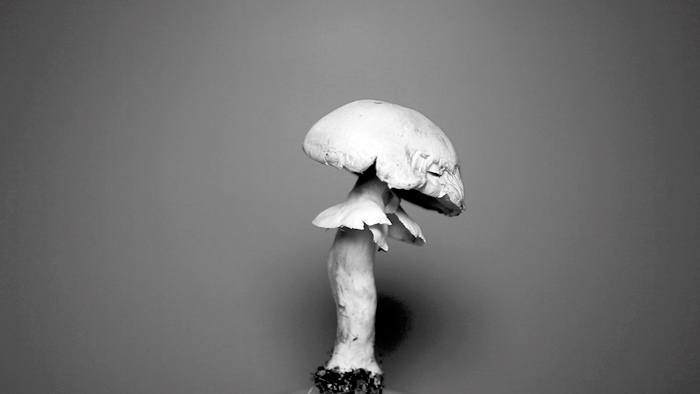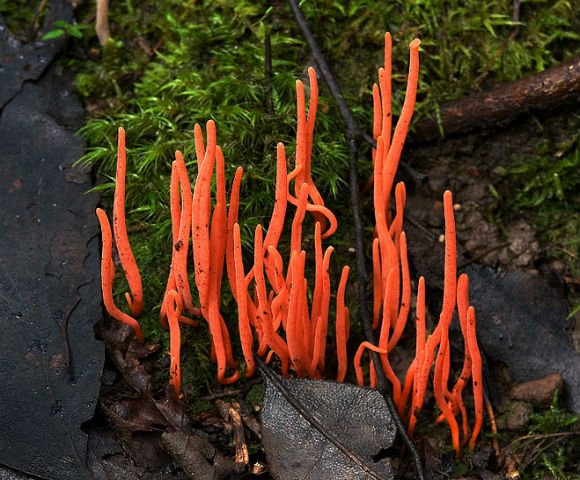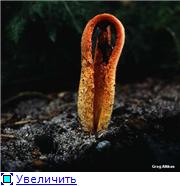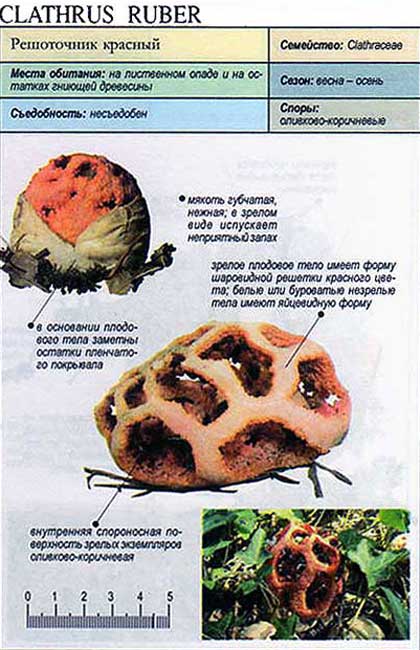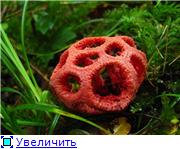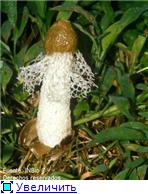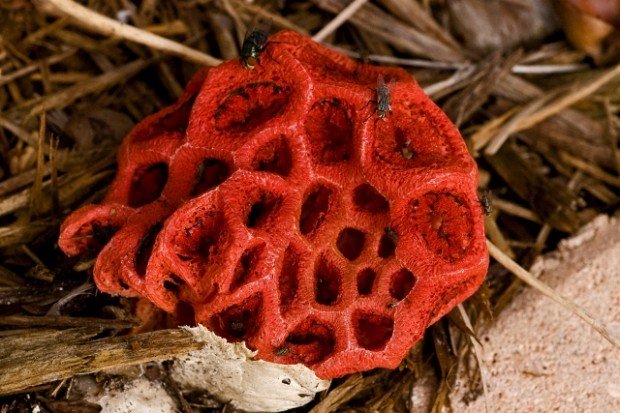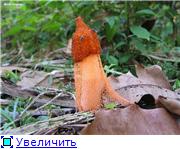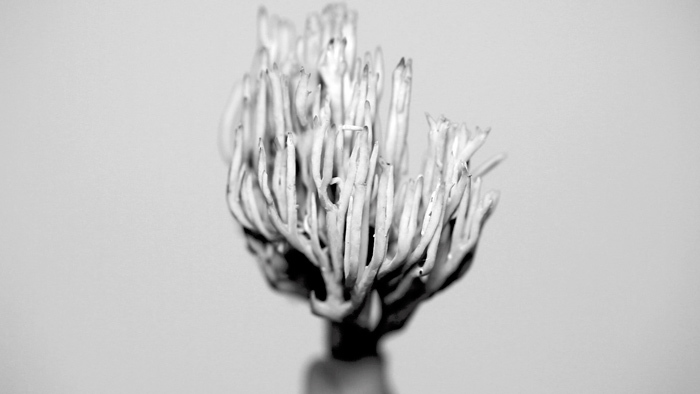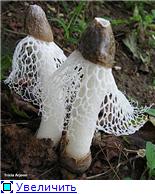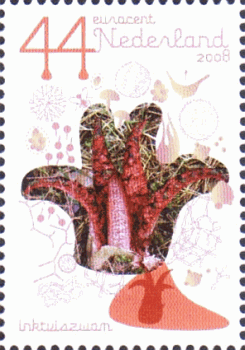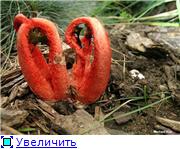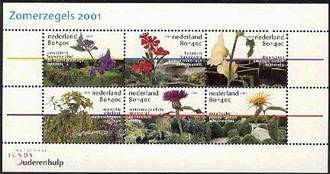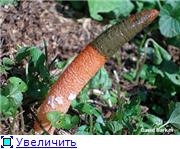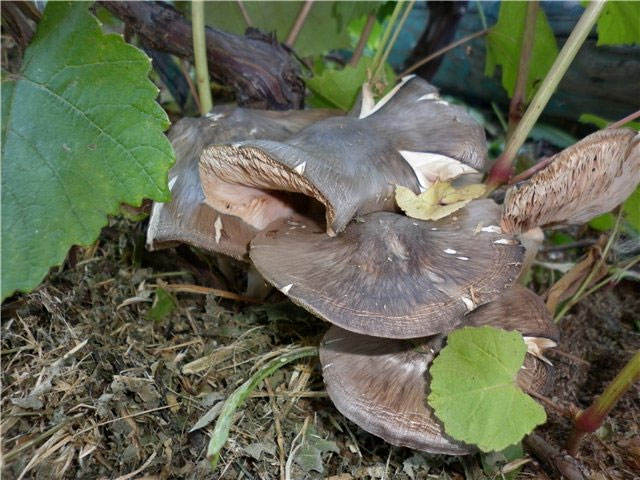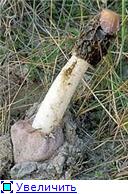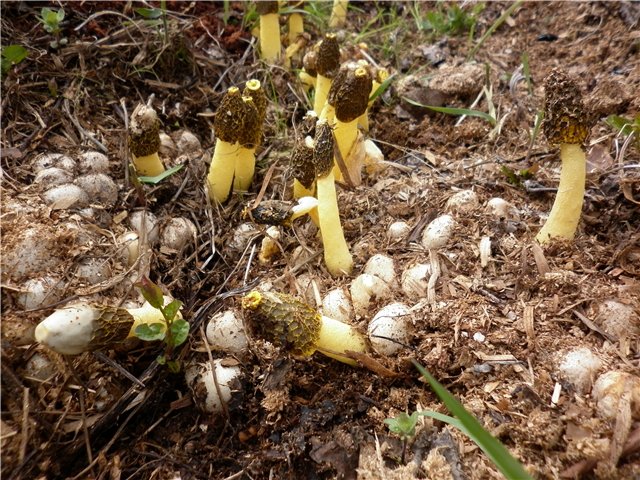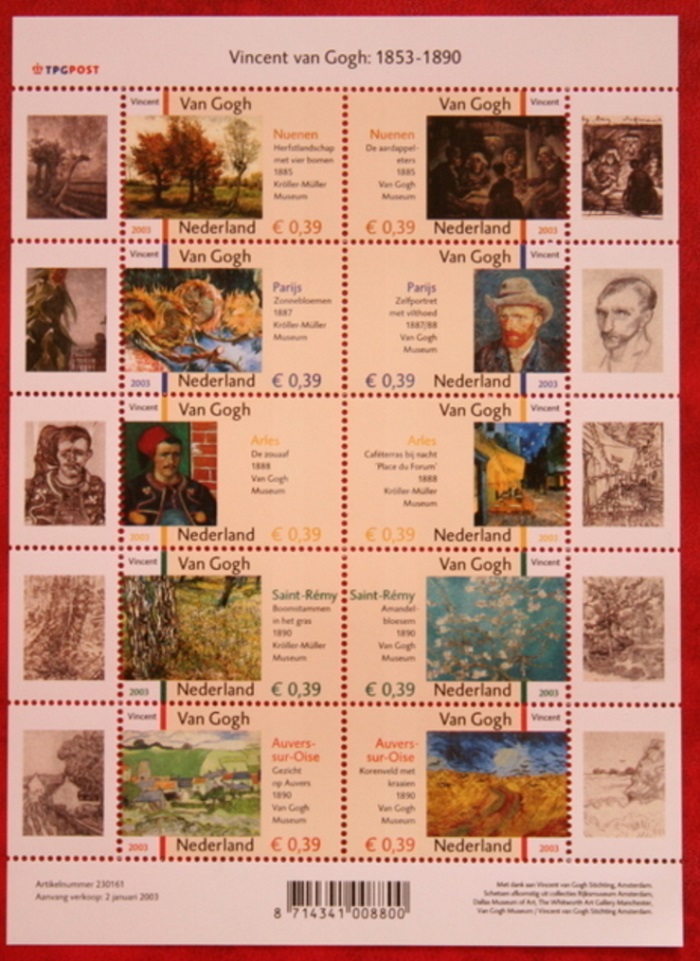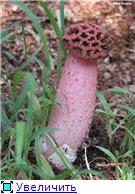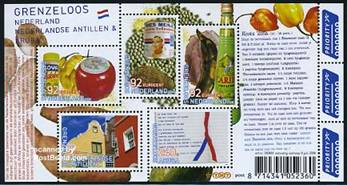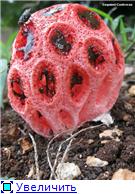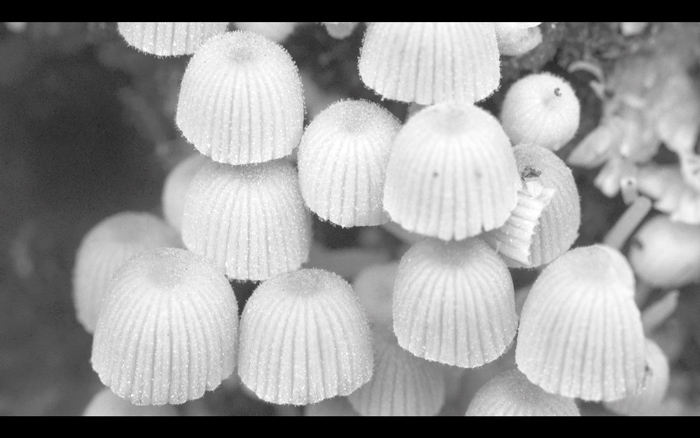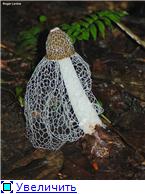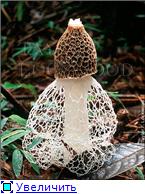Columnar lattice, what it looks like, where it grows, how to distinguish whether it is possible to eat
Columnar lattice: description and photo, edibility
| Name: | Columnar lattice |
| Latin name: | Clathrus columnatus |
| View: | Inedible |
| Synonyms: | Laternea columnata, Linderia columnata, Colonnaria columnata, Linderiella columnata, Clathrus colonnarius, Clathrus brasiliensis, Clathrus trilobatus |
| Systematics: |
|
The columnar lattice has become a very original and attractive specimen, which can be found infrequently. Belongs to the Vaselkov family. In most cases, it is believed that this species was introduced to North America, since in fact there it is very often found in landscape regions and other places where exotic plants are planted.
Where columnar lattices grow
Very often, the columnar trellis is found in North and South America, China, New Zealand, Australia, Hawaii, New Guinea and Oceania. Because this species feeds on dead and decaying organic-based substances, they grow in a living environment where there is a strong accumulation of mulch, wood chips and other substances that are not poor in cellulose. Columnar lattice can be found in parks, gardens, clearings and around them.
How columnar lattices look
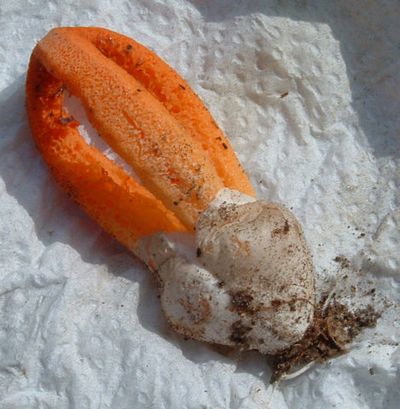
In an immature form, the fruit body is ovoid, which is partially immersed in the substrate. With a vertical incision, a thin peridium can be seen, compacted to the base, and behind it is a gelatinous layer, its approximate thickness will be approximately 8 mm.
When the egg shell breaks, a fruiting body appears in the form of several connecting arcs. Basically, there are 2 to 6 blades. From the inside, they are covered with spore-containing mucus, emitting a peculiar aroma that attracts flies. Actually, these insects are considered the main distributors of spores of this species of mushrooms, besides the entire genus Veselkov. The fruit body is yellow or pink to orange-reddish in color. The flesh itself is tender and spongy. Basically, the top of the fruit body takes on a lighter color, and below it is pale. The height of the blades reaches 15 cm, and the thickness is about 2 cm.
Spores are cylindrical in shape with rounded ends, 3.5-5 x 2-2.5 microns. The columnar lattice does not have legs or any other base at the arcs, it grows only from a burst egg, which remains below. In section, each arc is an ellipse with a longitudinal groove on the outside.
Is it possible to have columnar lattices
Regardless of the fact that there is little information about the columnar trellis, all sources say that this mushroom is designated as inedible. Situations of the use of this copy are also not recorded.
How to distinguish columnar lattices
The most similar variant is the Javanese flower stalker. It has 3-4 lobes growing from a common stem, which is likely to be short and therefore barely visible.
The shell of the flower stalk, in other words the veil, has a grayish or grayish-brown tint. You can distinguish the columnar lattice from this specimen as follows: cut the shell of the fruiting body and remove the content. If there is a small stem, then it is a double, because the columnar lattice has arcs that are not connected to each other.
An additional representative of the Vaselkov family is the red lattice, which bears similarities to the columnar specimen.However, there are still differences. Firstly, the double has a more spherical shape and a rich orange or red color, and secondly, it is the only representative of the lattice family that can be found in our country, especially from the south. Also, it is one of the toxic mushrooms.
As for the columnar lattice, this object on the territory of Russia has not yet been designated.
Conclusion
Of course, the columnar lattice can be of interest to any mushroom picker with its own original appearance. However, it is difficult to meet him, because this specimen is considered a rarity.
Columnar lattice
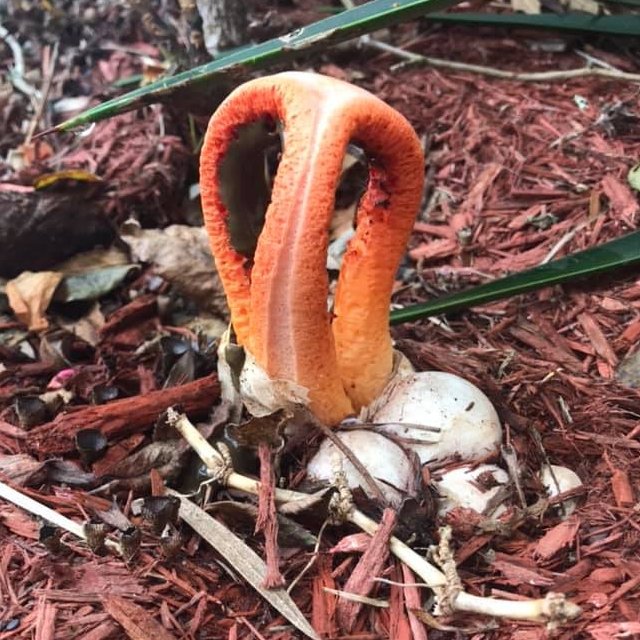
Columnar lattice (Clathrus columnatus)
- Laternea columnata
- Linderia columnata
- Colonnaria columnata
- Linderiella columnata
- Clathrus colonnarius
- Clathrus brasiliensis
- Clathrus trilobatus
Description
Like the other Vesyolkovs, Clathrus columnatus is born from an “egg”.
At the egg stage, the fruiting body is partially immersed in the substrate, it is rounded, almost spherical, may be slightly flattened at the bottom, 3x5 centimeters, with longitudinal grooves corresponding to the insertion of the peridial sutures and, consequently, to the lobes of the receptacle. If you make a vertical cut, you will see a rather thin peridium, very thin at the top, thicker at the base, behind it - a gelatinous layer up to 8 mm thick, and inside - a rounded gleb with a diameter of about 1.7 cm, occupying the upper part of the central part of the egg. The outer shell of peridium is often white, less often creamy, creamy to pale brown, sometimes cracking, forming angular brown scales. Quite strong strands of mycelium leave the egg into the substrate, which, if desired, can be excavated and traced to roots, stumps and other woody materials immersed in the substrate.
When the egg shell breaks, a fruiting fruiting body unfolds from it in the form of separate lobes, fused at the top. They resemble graceful curved columns or brackets. There can be from 2 to 6 such blades. The inner surface of the blades is covered with spore-containing mucus with a specific odor that attracts flies. Flies are the main spores of fungi of the entire family of merry mushrooms. The height of the blades is 5-15 centimeters. Pinkish to reddish or orange in color, paler below, brighter above. The thickness of each blade is up to 2 centimeters at its widest part. In some cases, two adjacent blades may be connected by a transverse bridge, especially near the top of the structure, or sometimes there may be an incomplete transverse process attached to only one blade. In section, each blade is an ellipse with a longitudinal groove on the outside and a rather complex system of grooves and grooves inside.
The blades have no legs or some common base; they come out directly from the burst egg, which remains in the form of a volva.
Spore-containing mucus (namely, "mucus", since there is no spore powder in the form of a "powder" in the jellyfish) abundant, initially compact mass, attached to the upper part, where the blades are connected, and slowly sliding down, at first olive-green, gradually acquiring olive -brown, dark.
Spores are cylindrical with rounded ends, 3-4 x 1.5-2 microns.
Ecology
Like all Phallaceae species, C. columnatus is saprophytic and uses extracellular digestion to extract nutrients from dead and decaying organic matter such as wood. Due to its tendency towards dead wood, the fungus is often associated with disturbed habitats. Often found growing in and around gardens, parks, clearings, where human activities have resulted in accumulations of mulch, wood chips or other cellulose-rich materials.
Season and distribution
Spring - autumn. The fungus has been found in Australia, New Zealand, Oceania, New Guinea, Africa, as well as in North and South America, Hawaii, and China.It is believed to have been introduced to North America as it usually appears in landscaped areas or other places where exotic plants have been planted.
Similar species
The Javanese flower barker (Pseudocolus fusiformis) is considered the most similar. It has 3-4 lobes growing from a common stem (which can be very short and hidden in a volva). Its "eggs" - and therefore the Volvo - are usually greyish to greyish brown (not white or off-white). The best and easiest way to distinguish the Columnar Grid from the Javanese Flowerbrew is to cut the Volvo and pull the entire structure out of it. If there is a common stem, it is a flower stalk. If the "pillars" are not connected to each other in any way, there is no common foundation - this is a columnar Grid. We are talking about mushrooms in an adult state, of course. Accurate identification of merry beetles at the “egg” stage is often impossible.
Mushroom photo Columnar lattice from questions in recognition:
Related species
The red trellis is an inedible mushroom. In the climatic conditions of Russia, it has no edible counterparts. The inedible and conditionally edible species that are part of the Veselkovy family include:
- florist Javanese;
- Archer's florist;
- canine mutinus;
- mutinus Ravenelli.
Javanese florist
The Javanese flower bollard is an inedible mushroom listed in the Red Book. In appearance, the fruit body resembles a cigar or spindle, consists of 3-8 parts (blades).
The color in young organisms is whitish, in older ones it is orange-red. The body stands on a low, hollow leg. On the inner side of the blades, there is an olive-colored slimy gleb. The inner side and sides of the "blades" are wrinkled. The Javanese florist species has a pungent odor, to which insects flock and carry spores for many kilometers.
This flower boll is most often found in Australia, North America, New Zealand and Africa. He loves a warm, even hot climate. They prefer humus-rich soil on the outskirts of the forest, it is a saprophyte.
Archer's Flowerbird
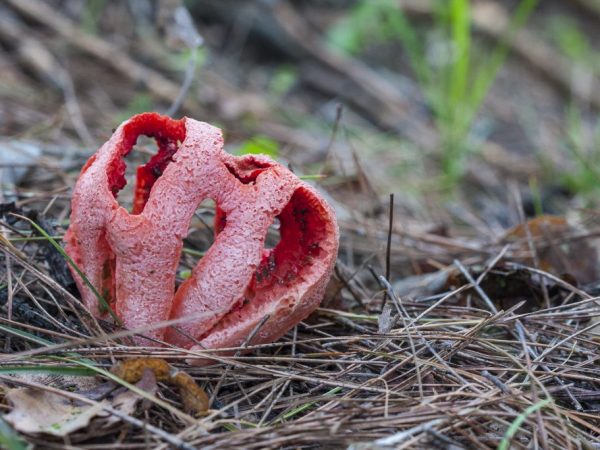
The mushroom has an unpleasant odor
Another inedible species is the Archer's (Arger) flower stalk. His homeland is Australia. In France, it was first seen in 1814. In the rest of Europe, it appeared only in the 19th century. The name was given in honor of the scientist-mycologist W. Archer.
It has the following description:
- pear-shaped fruit body;
- the diameter of the fruiting body is 5-6 cm;
- mycelium hyphae are long, located at the base;
- peridium is whitish, with a gray tint;
- the recipe develops after the rupture of the outer shell;
- no legs;
- the inner surface of the recipe is spongy;
- the smell is pungent, unpleasant.
The recipe, when bursting, becomes similar to tentacles, and the shape of the entire mushroom immediately becomes star-like and reaches 15-16 cm in diameter. The wrinkled inner surface is covered with greenish spots - spore-bearing gleba. The blades have a delicate brittle flesh. The spores are medium in size (in terms of microscopic size), in the form of narrow cylinders, olive or green in color. A young organism is sometimes confused with an ordinary veselka.
The smell, unpleasant for the human sense of smell, attracts small insects that help the body spread, carrying its spores in different directions.
This saprophyte occurs in deciduous or mixed forests from July to October. Rarely grows on sandy soils.
A strong unpleasant smell warns that the mushroom is inedible, its pulp is tasteless.
Canine mutinus
One of the related species of trellis is the canine mutinus. It forms fruiting bodies from mid-summer to late October in North America and European countries.
Its description:
- the shape of the fruit body is oval;
- diameter - up to 3.5 cm;
- height - up to 20 cm;
- the color of the spore-bearing gleb is light green;
- the surface of the gleb is cellular.
The surface of the recipe has a dull red tint, the pulp smells unpleasant when broken.Fruiting begins in July and ends in late October. The fungus settles in humus-rich soil and is a saprophyte.
Canine mutinus grows in families. It is only necessary to collect (as in the case of the vestka) specimens that are in an egg-shaped, non-bursting shell. After it bursts, the gleba quickly spreads into an unpleasant, but very attractive mass for insects. Insects attracted by its specific "aroma" carry spores over long distances from the parent organism, which contributes to the dispersal of the fungus. After 3-4 days, not a trace remains of the whole mushroom.
Rare Red Book Lattice Mushroom Grows in the Garden of a Tuapse Resident
10 amazing and bizarre mushrooms that can be found in the forest
Sochi! Red lattice in Adler!
Features of the red trellis mushroom
Lattice red or red clathrus (Clathrus ruber) Is a deadly mushroom with an amazing appearance, which is extremely rare only in the southern regions of Russia. Listed in the Red Book.
All of its representatives are poisonous at any stage of development. This unusual creation of nature can only be admired from the outside. Fortunately, this mushroom has no counterparts and cannot be confused. On the territory of Russia, this extravagant mushroom is the only representative of a kind of Lattice. Some other representatives are common in southern and western European countries, especially in the Mediterranean zone.
Lattice red prefers dense deciduous forests with low daily illumination. In forests of a mixed type, it is much less common, hiding in thickets of century-old larches. It does not grow in areas where winter temperatures drop below 5C. In such an environment, the mycelium of the fungus becomes unviable.
In most cases, organic-enriched, moist soils become the place of settlement. As a rule, it grows as single individuals, but during periods of high humidity and temperatures above 25C, group colonies can be found.
Externally red lattice resembles a mesh ball of fringed plexus. With excessive shading, the shape can be transformed into a more elongated, ovoid shape. The lower part of the mushroom is slightly immersed in the substrate.
The fruiting body of the young red lattice has a compacted shape, bright red color with black splashes. Further, as it develops, the outer shell of the fungus opens, transforming into several independent petals with a common base. Gradually, they begin to tilt towards the ground. Formless pores form on their surface. As they expand, they literally turn the mushroom into a trellis. The edges of each cell are cut with a scalloped fringe. It is quite dense, does not stand out in color from the body of the fungus.
The ball of the fruiting body grows up to 10 cm in diameter. A mature mushroom retains its structure for up to 120 days.
Another prominent feature red lattice is the concentrated smell of rotting flesh. In mature mushrooms, it is so sharp and strong that it spreads over a radius of more than 15 m. It attracts only insects, which carry the spore powder of the fungus for several kilometers.
Lattice red used as an element of exhibition compositions, in the design of landscape design. But it should not be forgotten that this extravagant mushroom is deadly poisonous.
Grate red
| Group: | Marsupials |
|---|---|
| Plates: | Absent |
| Colour: | Reddish |
| Info: | Strong rotting smell |
| Department: | Basidiomycota (Basidiomycetes) |
|---|---|
| Subdivision: | Agaricomycotina (Agaricomycetes) |
| Class: | Agaricomycetes (Agaricomycetes) |
| Subclass: | Phallomycetidae (Veselkovye) |
| Order: | Phallales (Merry) |
| Family: | Phallaceae (Merry) |
| Genus: | Clathrus |
| View: | Clathrus ruber (Grill red) |
The red grill is inedible, as it smells quite strongly of rotting meat. According to some sources, the mushroom is also poisonous.
Description
The red lattice has an unusual "lattice" structure. Among the representatives of its kind, it is the only one in Russia, and it is listed in the Red Book.
Fruiting body
This mushroom has neither a cap nor a leg; the fruiting body is represented by a recipe. At a young age, it is enclosed in an egg-shaped peridium (about 10 * 5 cm in size) and a gelatinous mass of the middle layer. When ripe, peridium "hatches" a receptacle in the shape of a cell or a net, covered with a layer of gleba on the inside.
Usually, the outer surface of the recipe is red, much less often white or pale yellow. The mushroom belongs to the veselkovy family, therefore, a similar process of growth and maturation is observed (first in the peridium, later in the form of a recipe, carrying a gleb). At the base of the matured mushroom, remains of velum are observed, which look like thin films.
Spore-bearing layer
The spore-bearing surface is located on the inner side of the mature fungus receptacle. It has a greenish brown color.
Pulp
Density: soft and porous.
Color: reddish (matches the surface).
Organoleptic Characteristics: Mature specimens emit a strong rotting odor to attract flies and other insects. Insects land on the mushroom, get dirty in the mucus containing spores and carry them over considerable distances.
Spores: small, oval.
Spore powder: generally greenish brown.
Spreading
Habitat: it is found infrequently and pointwise (there is no extensive distribution area). Spotted in the Moscow Region, Transcaucasia, Krasnodar Territory and Crimea. The introduction of the trellis to the greenhouses along with plants from Abkhazia was observed.
Fruiting period: grows from spring to autumn.
Similar species
There are no similar species in the red trellis on the territory of Russia. Related species are found only in Western and Southern European countries.
Edibility
The red grill is inedible, and according to some sources it is even poisonous. Therefore, it is not used for either gastronomic or medicinal purposes. The only known use of the trellis is as an element of landscaping in the local area.
Interesting Facts
It is clear that accidentally poisoning with such a noticeable and rare fungus is quite difficult. Therefore, lattice poisoning is observed mainly among children who come into contact with the fungus through an oversight of their parents.
Lattice poisoning has the following symptoms:
Bloody diarrhea
Archer flower carrier (Clathrus archeri)
- Other names for the mushroom:
- Archer's Clathrus
- Anturus archer
- Archer's grate
Other names:
Description:
Young fruiting body up to 4 - 6 cm in diameter, pear-shaped or ovoid, with long mycelial strands at the base. The peridium is whitish or grayish, with a pink and brown tint, after rupture it remains at the base of the fruiting body. From the bursting ovoid envelope, the recipe rapidly develops in the form of 3-8 red, first accrete to the apex, then rapidly dividing and spreading, like tentacles, lobes. Subsequently, the mushroom takes on a characteristic star-shaped shape, resembling a flower with a diameter of about 10 - 15 cm. This mushroom does not have an obvious leg. The structure of the inner surface of the blades resembles a porous, wrinkled lip, covered with dark irregular spots of olive, slimy, spore-bearing gleb, emitting a strong unpleasant odor that attracts insects.
On the cut of the mushroom in the ovoid stage, its multilayer structure is clearly visible: on top of the peridium, under which there is a mucous membrane resembling jelly. Together they protect the fruiting body from external influences. Below them is the core, which consists of a red receptacle, i.e. future blades of the "flower", and in the very center is visible a gleb, i.e. spore-bearing layer of olive color. The flesh of the already opened blades is very brittle.
Spores 6.5 x 3 μm, narrow-cylindrical. Spore olive powder.
Spreading:
The archer flower breeder grows from July to October on the soil of deciduous and mixed forests, occurs in meadows and parks, and is also noted on sand dunes. Saprophyte. It is rare, but grows in large quantities under good conditions.
Similarity:
Archer flower carrier - A peculiar mushroom, not similar to others, but there are closely related species:
The Javanese flower barker (Pseudocolus fusiformis syn. Anthurus javanicus), characterized by blades converging to the apex, is noted in the Primorsky Territory, as well as in tubs with tropical plants, in particular, in the Nikitsky Botanical Garden. And, quite rarely, the Red Lattice (Clathrus ruber).
At a young age, in the ovoid stage, it can be confused with the Common Veselka (Phallus impudicus), which is distinguished by the green color of the flesh on the cut.
Rating: Archer flower-carrier - Doesn't matter for food.
The pungent, repulsive smell of the fruiting body of the Archer flower stalk, as well as the bad taste of the pulp, determines the fact that the fruiting bodies of this species are correlated with inedible mushrooms. The described mushroom is not eaten.
Note: History of penetration: Australia is considered to be the ancestor of the fungus, but for Europe it is an alien. It was first discovered in France in 1914, possibly, its spores were brought together with wool, which was imported at that time from Australia. Subsequently, the mushroom was found in southern Germany (1937), Switzerland (1942), England (1945), Austria (1948), Czech Republic (1963), Spain (1973). It traveled to the shores of the Baltic Sea for more than 60 years, and today it is increasingly celebrated on the Eastern European continent.
Etymology: Clathrus (m) from Greek kleithron. with a similar meaning claustrum lat. 1) bolt, lock; 2) storage, cage. Also kleis Greek. bolt, constipation. Pinea claustra - pine dungeon - this is how Virgil wrote about the Trojan horse. The epithet archeri is given in honor of the Irish mycologist W. Archer.
Previously, the described type of mushroom was attributed to rare specimens, but now lovers of quiet hunting find more and more fruiting bodies of this species.
Where the red trellis grow
The red trellis prefers to grow under broadleaf trees, around which the soil is rich in humus. Also a favorable environment for its germination is a wet litter of fallen leaves and rotting wood residues. In exceptional cases, this species can grow in mixed forests.
The red trellis belongs to the category of thermophilic mushrooms, so it is able to survive only in those regions where the temperature does not drop below -5 degrees, regardless of the season. Therefore, the red lattice can be found in the Krasnodar Territory, the Caucasus and the Crimea, mainly in those places where there is little illumination during the daytime. If the temperature drops below the critical mark, the mycelium of the fungus dies.
Important! A single case of this species was recorded in the Moscow region. Outside Russia, the red lattice is found in European countries with favorable climatic conditions
Also the area of its distribution is North America, North Africa and the Mediterranean region.
Outside of Russia, the red lattice is found in European countries with favorable climatic conditions. Also the area of its distribution is North America, North Africa and the Mediterranean region.
There have also been cases of fungus germination in a greenhouse, when its spores were brought along with the soil. This is how this species came to Siberia, to the city of Gorno-Altaysk. The red lattice mainly grows in single specimens, but under conditions of high humidity and air temperatures above +25 degrees, germination of group plantings is possible.
Fruiting lasts from spring to autumn. In this case, the mushroom germinates only under favorable conditions.
Important! This is the only representative of the Veselkov family that is found in Russia.
Red lattice
The red lattice is an amazingly beautiful mushroom. Its scientific name is red clathrus. It is very rare, mainly in the southern regions of our country.
It is listed in the Red Book and is under state protection. Therefore, do not rush, despite all the poisonousness of the mushroom, trample it with your feet if found in the place where you are walking.
It does not grow in those regions of Russia where in winter the ambient temperature drops below minus 5 degrees Celsius. Under such conditions, the mycelium of the fungus completely dies.
Without exception, all individuals at any stage of development are deadly poisonous. Therefore, the lattice can only be admired from afar. Fortunately, it is impossible to confuse it with another edible mushroom, since it has no counterparts. This is an exclusive representative of the genus of trellis that grow in Russia. In the countries of western and southern Europe, especially in the Mediterranean zone, some other varieties of this mushroom grow.
Grows as solitary individuals. Groups of mushrooms are found only during periods of high air humidity with average daily air temperatures above 25 degrees Celsius.
It grows more often in dense deciduous forests, where conditions of low illumination are created during the day. The soil should be rich in organic matter and contain a lot of moisture. In mixed forests, it is less common, mainly in thickets, consisting of century-old larches.
It is often used in compositions for the formation of exhibition complexes in greenhouses. It can be used for decorative purposes in the formation of landscape designs. But it should be borne in mind that it is not safe if there are small children in your family, who will undoubtedly be attracted by the extraordinary appearance of this mushroom.
Photo and description of the red lattice
In the photos below, the red lattice looks like a mesh ball studded with microscopic fringed formations. This is a completely adult individual, which is capable of staying in this state for up to 120 days. The spherical body is the whole mushroom.
Only the lower part can be immersed in the substrate, which is hidden until the mushroom is fully ripe. In some cases, under strong shading conditions, the lattice becomes egg-shaped during growth.
At the initial stage of development, it has a dense form of bright red color with dark depressions. As it grows, the outer shell opens and separates into several independent petals, which are attached to one base.
Then the petals are rounded and tilted towards the ground. Pores of irregular geometric shape are formed in the form of a lattice. A jagged fringe remains along the edges of each cell, which is quite dense and does not differ in color from the main body of the mushroom. The height of an adult mushroom can reach 10 cm.The width of the ball ranges from 8 to 12 cm.
A distinctive feature is the smell of rotting flesh, which can be felt 10-15 meters from the location of the red trellis.
The smell is emitted only by individuals that carry fully matured spores on the inner side of the lattice structure. Thus, the mushroom strives to continue its genus. After all, insects attracted by the smell can spread the spore powder for several kilometers.
Types of negative impact on humans
Red lattice food poisoning is the exception rather than the rule. It's not just that mushrooms are rare. Most likely, few people would think of taking such an intricate shape of a mushroom into their basket. Some do not associate it with the mushroom kingdom at all, mistaking it for bizarre plants.
Poisoning most often occurs among children who, through an oversight of their parents, find themselves in close proximity to an exotic representative of the forest. It can even be an adjoining territory, in the interior of which a lattice is used in order to form a landscape composition.
Poisoning manifests itself in the form of repeated vomiting, loose stools mixed with blood, an increase in body temperature. All symptoms go away on their own after 10-12 hours. This fungus does not have a long-term effect on the human body. Medical attention may be needed when vomiting and loose stools are causing dehydration.
conclusions
If you are fortunate enough to walk through the forest and meet this mushroom on your way, you can admire it, capture it on your camera or try to smell it. But please, in no case pull it out of the ground, do not take it as a souvenir. The red grate is not intended to be used as food or medicine. It's not safe to hold it in your hands, and it's not a good idea to leave it at home. They can easily poison your pets or children. Therefore, pass by such beauty, leave it alone, because this mushroom is already listed in the Red Book, which means it is on the verge of extinction. Don't leave your planet without this unique species, give it a chance to survive. And also carefully look under your feet, because some of the trellis are small enough and are practically invisible in the grass. It is very easy to crush them, thereby depriving us of such a wonderful population.

